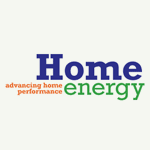Share
Related Topics
Tagged As
Ironically, in the United States today you're far more likely to breathe some of the most debilitating compounds, like formaldehyde, phthalates, chlorine, and PFOA, from pesticides, building materials, cosmetics, furnishings, and cleaners - at home. This is a fairly recent development. Since World War II, both the volume and number of synthetic chemicals have burgeoned. The air inside our houses is often so bad the U.S. Environmental Protection Agency (EPA) continues to warn that it may be a serious threat to human health. How did things get so wrong? Progress sometimes comes at a price.
We do not strictly control Google ad content. If you believe any Google ad is inappropriate, please email us directly here.
By 1913 the effects of the Industrial Revolution were clearly apparent. Changes in sanitation, agriculture, and general attitudes toward life led to a spectacular decline in mortality. Steel mills, auto plants, textile factories, railroads, and food processing plants brought employment, goods, and services closer to home. For the first time in history, motorized vehicles enabled people to travel with both speed and comfort.
Housing, too, reflected this change. Indoor plumbing replaced outdoor privies. Central heating replaced wood and coal stoves. Electricity lengthened productive hours of the day. The hand-cranked washing machine, icebox, and gas oven simplified everyday chores.
Still, turn-of-the-century “homekeeping” books stressed simplicity, economy, and thrift. Household Discoveries and Mrs. Curtis’s Cook Book, a 1,200-page tome popular at the beginning of the 20th century, includes easy recipes for making soap, toothpaste, shampoo, cold cream, and toilet powder—all from readily available ingredients. Within its densely packed pages, a reader can find prudent advice on extinguishing fires, cleaning chimneys, disposing of household wastes, and eliminating flies.
Houses built in the early 20th century had some key advantages. Though solidly built, they were not tightly sealed, so air tended to pass through fairly frequently. Most houses were sited to take advantage of prevailing breezes and the sun’s light.
Post World War II
Then came World War II. Chemicals initially developed for the war effort found their way into America’s houses—in cleaners, building materials, cosmetics, pesticides, and more. During the 1950s, advertisements promised to get clothes “whiter than white,” make countertops “cleaner than clean,” and bring “sparkle” to the toilet bowl. As DuPont promised, it was “better living through chemistry.”
The 1960s witnessed another explosion of new chemicals in every type of consumer product. Synthetic fibers devised in the laboratory took the place of cotton, silk, and wool. Plastic replaced wood, glass, and metal. Styrofoam became popular containers for food and drink "to go." Farmers sprayed chemical fertilizers and pesticides on the nation’s farmlands to increase yields.
Though we weren’t aware of it, America’s houses were filling up with fumes from paints, stains, furniture, cleaners, and other human-made materials. To make matters worse, we were well on our way to becoming a “disposable society,” one that encouraged buying a new “improved” item even when the one it replaced could be repaired.
By the 1970s, “sick buildings” became a part of the lexicon, a term coined to describe a building in which residents reported a range of adverse physical symptoms—lethargy and fatigue, headaches, dizziness, nausea, irritation of mucous membranes, sensitivity to odors, eye and nasal irritation, runny nose, nasal congestion and general malaise - all due to indoor air pollution, a result of poor design, bad ventilation, and a plethora of synthetic chemicals offgassing from furnishings, building materials, and cleansers.
In 1986, a five-year study by Harvard University scientists released by the U.S. EPA revealed that pollution inside the typical American home was two to five times worse than the grimiest outdoor air. Another study by the Consumer Product Safety Commission found that indoor air contained approximately 150 volatile organic compounds (VOCs, a type of airborne pollutant), while outdoor air contained fewer than ten on average. To make matters worse, we’ve insulated, caulked, and weatherstripped to the point where our houses no longer breathe, allowing unsafe chemicals to hang around inside for days, contaminating the air we breathe.
The Situation Now
The bottom line is that we are being exposed to thousands of synthetic chemicals that simply didn’t exist in significant quantities on this planet until a few decades ago.
Excerpted and adapted with permission from The Healthy Home: An Attic-To-Basement Guide To Toxic-Free Living (Rodale Press, 1989).
HHI Error Correction Policy
HHI is committed to accuracy of content and correcting information that is incomplete or inaccurate. With our broad scope of coverage of healthful indoor environments, and desire to rapidly publish info to benefit the community, mistakes are inevitable. HHI has established an error correction policy to welcome corrections or enhancements to our information. Please help us improve the quality of our content by contacting allen@healthyhouseinstitute.com with corrections or suggestions for improvement. Each contact will receive a respectful reply.
The Healthy House Institute (HHI), a for-profit educational LLC, provides the information on HealthyHouseInstitute.com as a free service to the public. The intent is to disseminate accurate, verified and science-based information on creating healthy home environments.
While an effort is made to ensure the quality of the content and credibility of sources listed on this site, HHI provides no warranty - expressed or implied - and assumes no legal liability for the accuracy, completeness, or usefulness of any information, product or process disclosed on or in conjunction with the site. The views and opinions of the authors or originators expressed herein do not necessarily state or reflect those of HHI: its principals, executives, Board members, advisors or affiliates.









